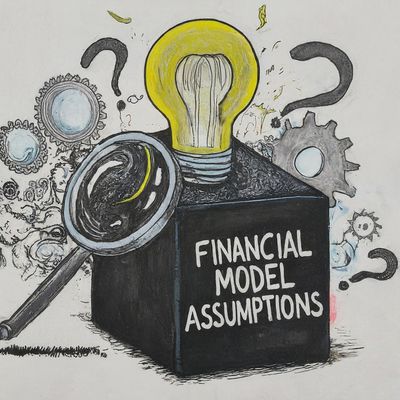Case Study: Black Box of Assumptions in Financial Modeling
Suby Joseph
Scenario: A company is building a financial model to assess the potential profitability of launching a new product line.
Black Box Assumptions:
- Market Growth Rate: The model assumes a specific annual growth rate for the target market. This assumption is crucial for projecting future sales, but it might not be explicitly stated or justified within the model itself.
- Customer Acquisition Cost: The model factors in a cost per customer acquired, but the underlying assumptions about marketing effectiveness, conversion rates, and competitor strategies might not be readily apparent.
- Manufacturing Efficiency: The model assumes a certain level of efficiency in production, impacting the cost of producing each unit. However, factors like potential production delays, raw material price fluctuations, or learning curve effects might not be explicitly considered.
Consequences of the Black Box:
- Hidden Risks: If the underlying assumptions are overly optimistic or not well-supported, the model could underestimate potential costs or overestimate market demand, leading to misleading conclusions about profitability.
- Limited Transparency: Without clear documentation or explanations for these assumptions, it's difficult for someone reviewing the model to understand the rationale behind the projections.
- Difficulty in Adapting: If market conditions change unexpectedly, it's harder to adjust the model and assess the impact on profitability if the key assumptions are hidden or not readily accessible.
Avoiding the Black Box:
- Document Assumptions Clearly: Clearly state and document all key assumptions used in the model, along with the rationale behind them. Include references to data sources or expert opinions used to justify those assumptions.
- Sensitivity Analysis: Run the model with different scenarios using a range of values for key assumptions. This helps assess how sensitive the results are to changes in those assumptions and provides a more nuanced view of potential outcomes.
- Encourage Collaboration: Discuss the assumptions with colleagues or stakeholders during the modeling process.This can help identify potential biases or unrealistic expectations and ensure the assumptions are grounded in a broader perspective.
By making assumptions transparent and conducting sensitivity analysis, you can lift the lid on the black box and build a more robust and trustworthy financial model.
Discuss Further

